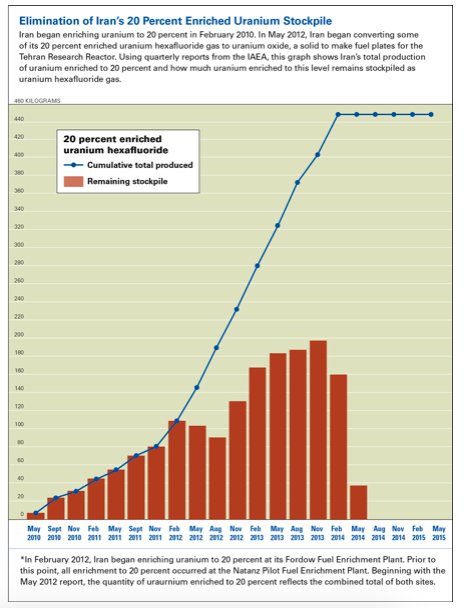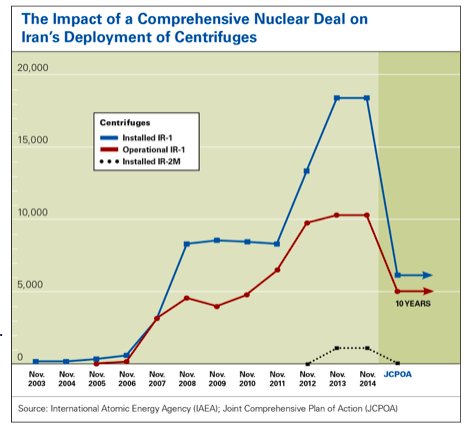
4 years ago today, former President Trump made the irresponsible decision to withdraw the US from the #IranDeal - an agreement that had proved to be effective & verifiable in blocking Iran's pathways to the bomb.
Lets examine how damaging that decision has turned out to be 1/
Lets examine how damaging that decision has turned out to be 1/
Trump withdrew despite members of his own cabinet acknowledging that Iran was complying with its obligations. He also isolated the US by leaving the deal over the objections of key US allies that view the nuclear deal as critical for their security.
dw.com/en/frances-emm…
2/
dw.com/en/frances-emm…
2/
Certain Trump administration officials even opposed the decision to withdraw. In Oct. 2017 then Defense Secretary Mattis said it was in the US national security interest to remain in the nuclear deal.
theguardian.com/us-news/2017/o…
3/
theguardian.com/us-news/2017/o…
3/
Unfortunately, Trump didn't listen. His withdrawal from the #IranDeal & subsequent maximum pressure campaign manufactured a new nuclear crisis with Iran that jeopardizes US national security.
Because unsurprisingly, Iran responded by violating deal's limits to build leverage 4/
Because unsurprisingly, Iran responded by violating deal's limits to build leverage 4/
When the #IranDeal was fully implemented, it would have taken 12 months to produce enough weapons-grade uranium for 1 bomb, if Tehran chose to do so. And with Iran subject to the most intrusive monitoring regime ever negotiated, any move to a bomb would be quickly detected 5/
That 12 month breakout has now shrunk to about 2 weeks & will continue to drop. And with Tehran having significantly reduced monitoring & verification, Iran could soon try to dash to produce enough weapons grade uranium between inspections. That's a serious proliferation risk. 6/
And likely risk the US won't let stand. Even though weaponization would take another 1-2 years, that process is much easier to conceal even if the breakout was detected. So the best chance of disrupting a dash to a bomb is before the weapons grade material is produced & moved. 7/
The decline in breakout is largely due to Iran's resumption of enrichment to 20% & its decision to start enriching to 60%-a new level for Iran & dangerously close to weapons grade. The use of advanced centrifuges (strictly limited for a decade under the deal) also contributes 8/
This great chart from @votevets shows how Trump's disastrous policy led to Iran ratcheting up proliferation sensitive enrichment and building up stockpiles of enriched uranium that far exceed levels in 2013 when negotiations on the #IranDeal began. 9/ 

This size of these stockpiles, plus the size of the stockpile of uranium enriched to 5% & deployment of additional centrifuges also means that Iran could quickly produce enough weapons grade uranium for additional warheads. 10/
This isn't the end of the bad news. In the long term, if the #IranDeal is not restored, Tehran could pursue a plutonium route to the bomb by completing the Arak reactor using its original design, which would produce enough weapons grade plutonium for 2 bombs per year. 11/ 

And all of these activities would be subject only to the Nuclear Nonproliferation Treaty's required safeguards agreement with the IAEA - which has proven inadequate in guarding against illicit nuclear weapons-related activities in the past. 12/
So in sum, as a result of Trump's disastrous decision to withdraw from the #IranDeal on May 8 2018:
1) Iran's uranium enrichment program is now on the brink of undetectable breakout
2) Iran's nuclear program is subject to significantly less intrusive monitoring & inspections 13/
1) Iran's uranium enrichment program is now on the brink of undetectable breakout
2) Iran's nuclear program is subject to significantly less intrusive monitoring & inspections 13/
3) US credibility took a blow because Iran was complying with the deal when Trump withdrew
4) the US showed blatant disregard for the security interests of US allies; &
5) US national security is now at risk because of the proliferation threat posed by Iran's nuclear program. 14/
4) the US showed blatant disregard for the security interests of US allies; &
5) US national security is now at risk because of the proliferation threat posed by Iran's nuclear program. 14/
While Trump ignited this crisis, President Biden bears responsibility for failing to put out the fire. There is a path back to full implementation of the #IranDeal - if he is courageous enough to put effective nonproliferation policy ahead of politics. 15/
Restoring the #IranDeal will not transform the relationship between Washington & Tehran or erase tensions in the region. But all of these problems are significantly worse & more challenging to address under the looming threat of a nuclear-armed Iran. 16/16
• • •
Missing some Tweet in this thread? You can try to
force a refresh





